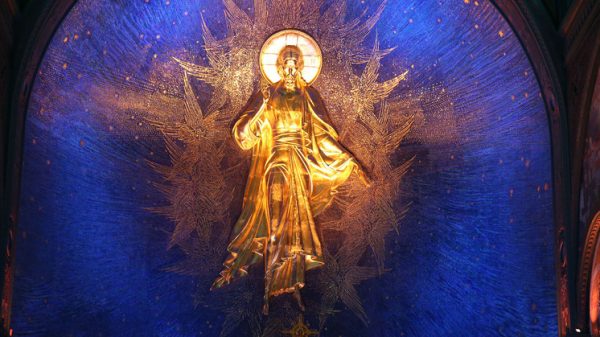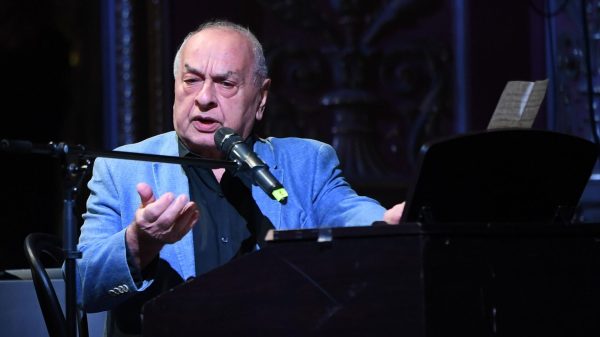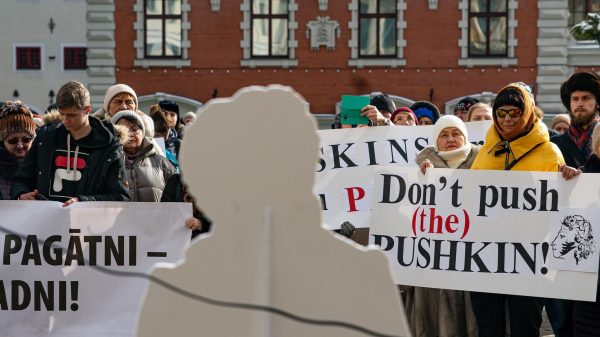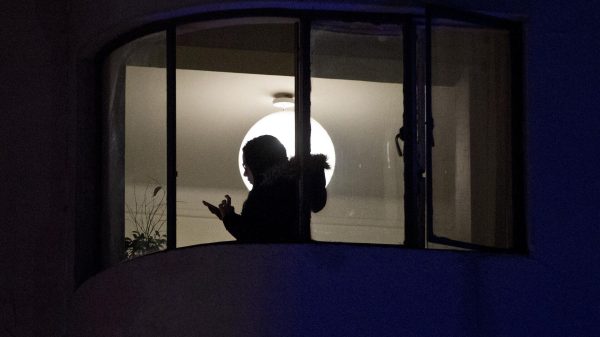A couple of years ago, as railway workers demonstrated in Paris against proposed government reforms, a banner in the crowd offered a blast from France’s revolutionary past: “We don’t care about May ’68,” read its slogan. “We want 1871.”
It was a message that the protesters meant business. These days, the students’ revolt of 1968, and its injunctions to “Be realistic … demand the impossible”, are remembered with fond nostalgia. But in the annals of French revolutionary upheavals, the memory of the Paris Commune of 1871 and its bloody barricades has a darker, edgier status. “Unlike 1789, the Commune was never truly integrated into the national story,” says Mathilde Larrère, a historian specialising in the radical movements of 19th-century France. Wild, anarchic and dominated by the Parisian poor, the Commune was loathed by the liberal bourgeoisie as well as by the conservatives and monarchists of the right. Its savage suppression by the French army, and its own acts of brutal violence, created wounds that never healed. “The Commune of 1871 didn’t become part of a consensual collective memory,” says Larrère. In respectable society, it was viewed as beyond the pale.
But exactly 150 years later, the “communards” are making a comeback, dividing Paris all over again. To mark the anniversary, the mayor of Paris, Anne Hidalgo, will this month plant a memorial tree in Montmartre, the crucible of the revolt. Place Louise Michel, named after the most famous female communard, will be filled by Parisians carrying lifesize silhouettes of the bakers, shoemakers and washerwomen who seized control of the capital in 1871. Entitled Nous La Commune (We the Commune), the event will kick off a series of exhibitions, lectures and concerts, plays and poetry readings, lasting until May. According to Laurence Patrice, the Paris councillor charged with overseeing the anniversary, it’s time the revolutionaries of 1871 were recognised as radical pioneers: “We are talking about a large group of citizens who came together to take their destiny into their own hands,” she said. “There was a modernity to what the Commune stood for and its aspirations were close to what some people want today.
“The communards battled to have legitimate, accountable political representatives. They wanted to give the vote to women, who played a huge role in the Commune. They defended equal pay and requisitioned empty homes to house the homeless. The Commune offered citizenship to foreigners and free access to the law. There are lots of echoes with today.”
This analysis has not, to put it mildly, met with universal approval. The tributes have enraged conservatives, including Rudolph Granier, a councillor in Montmartre and fellow member of Paris city council. Granier intends to boycott the Place Louise Michel event. “It’s a provocation,” he told the Observer. “I’m fine with commemoration, but not with a celebration. Listen, when the left defends the Commune, it’s the same as when the left defends communism. They say the ideas were beautiful, it’s just that they weren’t carried out properly.
“But whether one talks about communism or the Commune it ends up with bloodshed, and if an ideology encompasses killing, then in my opinion it’s not the place of politics to celebrate that ideology.”
Last month, during a fiery meeting at Paris’s Hôtel de Ville, Granier accused Hidalgo of exploiting the anniversary to bolster her standing on the left ahead of next year’s presidential election. Parisian conservatives are also objecting to council subsidies for the Association of the Friends of the Commune, an organisation which Granier claims “glorifies its most violent events”. As tempers have flared, Le Monde devoted a page to the row, headlined: “The 1871 Commune: an extremely tense anniversary.” The latest edition of the weekly political magazine L’Express asks: “Should the 150th anniversary of the Commune be celebrated?”
There is no straightforward answer. The Commune’s existence was brief and extremely bloody. In January 1871, France surrendered to Otto von Bismarck’s Prussian army, after a three-month siege that brought Paris to its knees. As France’s Second Empire collapsed, a new, pro-monarchist government was elected to negotiate with the Germans. But amid the chaos and national humiliation, the poorer half of Paris refused to give up its arms. On 18 March, the revolutionaries took over government buildings. The recently elected president, Adolphe Thiers, fled to Versailles.
Besieged on all sides, the increasingly authoritarian Commune lasted 72 tumultuous days before being savagely put down. “Never has a more terrible crisis unfolded in a great city,” wrote the novelist Emile Zola. At least 8,000 Parisian communards, including many women and children, died on the barricades or were shot by firing squads during the “bloody week” of 21-28 May. As the violence spiralled out of control, the archbishop of Paris and more than 50 other hostages, many of them priests, were killed by the Communards.
The legacy of a revolutionary experiment that shook Europe was commandeered by future generations of communists. Karl Marx described the Commune as the “glorious harbinger of a new society”. Lenin saw it as the forerunner to the Russian revolution. In 1936, in the days of France’s anti-fascist Popular Front government, 500,000 leftists made the pilgrimage to the Père Lachaise cemetery in Paris to honour the Commune’s martyrs.
But by the late 20th century, as the French Communist party found itself on the wrong side of history, the Commune was less talked about. The current row testifies to a new relevance, says Larrère, as modern politics gives its ideals a new lease of life. “The communist interpretation of 1871 was a very partial one,” she says. “The communards were not the working class of Marxist theory and the Commune was not a proto-soviet of industrial workers and soldiers. These people were the successors of the sans-culottes of 1789 – artisans, small businessmen and producers. They wanted a better democracy and a more social republic.”
A century and a half later, says Larrère, in post-industrial France, a new, poorly paid precariat is voicing similar demands. Popular movements outside the political mainstream have begun to invoke the memory of 1871. In 2016, as demonstrators occupied central Paris and held nightly assemblies in the Place de la République, the square was unofficially renamed Place de la Commune. Slogans of the sometimes violent gilets jaunes (yellow vests) movement – “The people are sovereign”, “Elected officials, you are accountable” – were communard in spirit, although the protesters’ grasp of dates was sometimes shaky. One piece of graffiti daubed on the side of the basilica of the Sacré Coeur in Montmartre, widely shared on social media, read: “La Paris Commune of 1781 [sic]/ Gilets jaunes 2018”.
“There are points of affinity with the gilets jaunes movement,” says Granier. “Revolution and the battle against injustice is a French tradition. But the big difference with past centuries is that we have a state of law now. I can’t understand why a political movement would want to celebrate an insurrectional movement like the Commune. It shocks me.”
“Conservatives are becoming so sensitive on the subject because it is there in front of them now, on the streets and on the walls,” says Larrère. “La Commune asked questions about centralised power, about representative democracy and popular sovereignty. The gilets jaunes posed the same questions, albeit in a different context. Are we really served by our elected officials and our representative democracy? Are there other means by which popular sovereignty can be exercised? These themes have been revived and that’s why, on the other side of the spectrum, there is a refusal to respect the memory of the Commune.”
As temperatures rise, the Sacré Coeur, which looms over Place Louise Michel in Montmartre, has been drawn into the fray. One of Paris’s biggest tourist attractions, the vast white basilica was conceived as an act of national penance following the disastrous outcome of the Franco-Prussian war. By the time building work began, financed by private donations, it was inextricably associated with Catholic hostility towards the Commune.
To avoid sending uncomfortably mixed messages, the city council has postponed a decision due this year on giving the church listed status, which would allow it to receive state subsidies. “There are people in Hidalgo’s coalition who want the Sacré Coeur destroyed because they see it as a monument against the Commune,” says Granier. “After Notre Dame, this is the most visited church in Paris. Rewriting history to score political points is not a dignified way of doing politics.”
Patrice is somewhat bemused by the general furore and puts the Commune culture wars down to her opponents’ desperation to parade their conservative credentials: “In Macron, France has a president who claims to be beyond left and right but acts more and more like a rightwing politician. The political space for conservatives is being squeezed between the president and [National Rally party leader] Marine Le Pen on the far right. This controversy is about them hardening their profile.”
She is hopeful that once events get under way, the war of words will be forgotten: “These commemorations are not about celebrating violence. And it should be remembered that it was the communards who paid the highest price for the insurrection, in deaths and deportations.”
On the Sacré Coeur controversy, Patrice strikes a conciliatory note, saying: “I don’t see any reason why, like other churches, it should not eventually be listed. The decision has just been put back, that’s all. People have been making some very aggressive arguments but this is about remembering an episode that is constitutive for the collective memory of the city. If you love Paris and live here then it is important to know its history.”
Old enmities die hard, however. In 1875, as the first stone of the Sacré Coeur was laid, one of its principal financiers made plain his contempt for the defeated communards. “For all those who love religion and their country”, said Hubert Rohault de Fleury, “the construction of a church on the place where cannons were snatched in the cause of insurrection, will be a source of joy.”
This spring, the other side of the story will be told.




















































Свежие комментарии